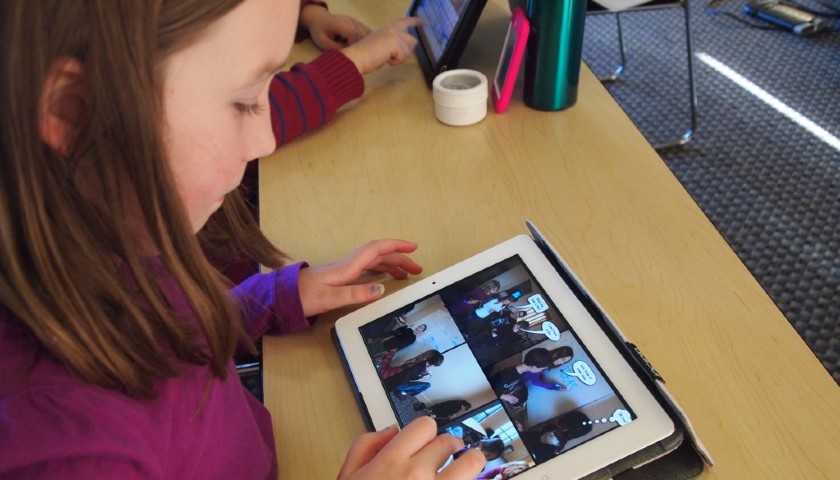by Catherine Mortensen
This morning, my son, a high school senior doing virtual learning, texted me, “I didn’t get out of bed for first period.” I replied, “Yikes!” To which he shot back, “It’s okay, I just did the class from bed.”
This cannot be a thing! Kids should not be going to school from their beds!
A few hours later, a friend on Facebook posted: “I’m totally winning at this parenting thing! I slept through my alarm and logged onto my son’s calendar time right as they were saying goodbye to everybody. So, he got marked tardy for today. And then I was trying to help my daughter with her math, but I don’t know the current math jargon, so I wasn’t able to explain it without making her cry. It’s only 11:00 am. This is going to be a stellar day.”
Another girlfriend posted in a Facebook group dedicated to reopening schools: “I went in to check on my 9th grader because she was yelling at her class – well it was at her computer. She was in tears telling me she was going to have to drop out or fail because there are too many tabs, and too much technology, and she doesn’t understand where she is supposed to find all her work. She said she asked for help but got kicked out of the group and couldn’t get back on and when she tried to talk to the teacher, they couldn’t hear her. ‘I can’t turn it in because I can’t find it. I can’t understand it when I do find it. Why can’t they just give me a sheet of work to do, I can do that, but I can’t do this computer stuff. It’s going to kill me.’ And I’ve been in tears since.”
Another friend, a therapist who works with youth, said all of her patient visits are done remotely and many of the young people she visits with online are home alone. “Yesterday I spoke to a 12-year old patient who is home with three younger siblings,” she said.
Whether parents are home, at work, or working from home, virtual learning is not working for anyone.
A parent at the office cannot fully focus on their job because they are worried about their child at home. Similarly, it is difficult for a parent to productively work from home if they have children who need help.
In the short term the schools closures and larger economic shut down resulted in a 37 percent drop in non-farm worker output from May to July and nation’s economy contracting by 31.7 percent in the second quarter.
With the economy now on the rebound, those losses appear to be temporary, however, scholars from The Brookings Institution looked into the long-term consequences of virtual learning and it’s not good. From the COVID-19 cost of school closures report finding “lost earnings of $1,337 per year per student: a present value loss of earnings of $33,464 (63 percent of a year’s salary at current average wage rates)… [and] a look at the impact on the whole of the country is much more sobering. In this model, the cost to the United States in future earnings of four months of lost education is $2.5 trillion—12.7 percent of annual GDP… Extrapolating to the global level, on the basis that the U.S. economy represents about one-quarter of global output, these data suggest the world could lose as much as $10 trillion over the coming generation as a result of school closures today.”
The human and economic costs of virtual learning are real. Our kids are losing years right now. By ignoring them we are placing our future in peril — and the cost may be more than we can bear.
– – –
Catherine Mortensen is the Vice President of Communications at Americans for Limited Government.
Photo “Virtual Learning” by Brad Flickinger CC2.0




